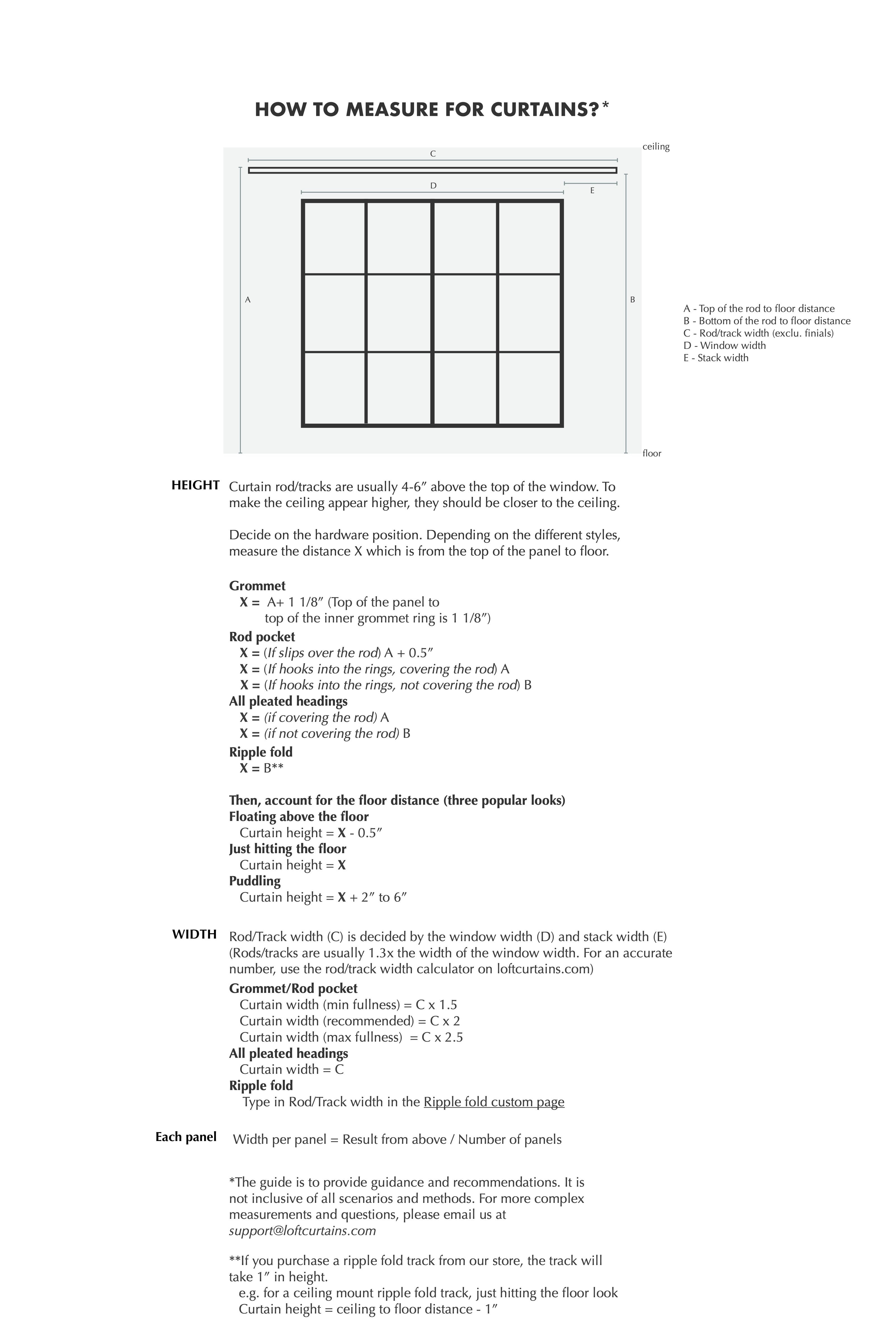Choosing the right curtain width is crucial for achieving the desired look and functionality. Too narrow, and your windows will look underdressed; too wide, and you’ll have excessive fabric bulk. This guide will help you determine the ideal curtain width for your windows, considering different heading styles and desired fullness.
Curtain Width by Heading Style
The width of your curtain panels should be calculated based on the heading style you choose, as each style has different fullness built-in:
French Pleat and Tailored Pleat
French pleat and tailored pleat curtains typically have 2x to 2.5x fullness already incorporated. This means the panel width you order should match your rod or window width. The built-in fullness will ensure adequate coverage and a visually appealing drape when the curtains are closed.
 French Pleat Curtains
French Pleat Curtains
Ripple Fold
Ripple fold curtains also come with built-in fullness. The total width of the panels should equal the length of your track. This ensures proper wave formation and coverage.
Grommet and Rod Pocket
For grommet and rod pocket styles, you’ll need to calculate the required fullness. Aim for a combined panel width that is 2 to 2.5 times the width of your window or rod. This will provide ample fabric for a luxurious look and proper light blockage when closed. If you only intend to use your curtains as stationary panels for framing the window and don’t plan on closing them, you can reduce the fullness to 1.5 times the window width.
Calculating Stack Back
Stack back refers to the space occupied by curtains when fully open. It’s important to consider stack back to ensure your curtains don’t obstruct the window view or interfere with other window treatments. A stack back calculator can help determine the appropriate stack back width for your window size and curtain fullness.
Determining Curtain Panel Height
While width is crucial, proper curtain length is equally important. Consider these factors when determining panel height:
Curtain Rod or Track Placement
Rods or tracks are typically installed 4-6 inches above the window frame. Mounting them closer to the ceiling can create an illusion of height.
Curtain Top Position
Tracks mounted directly to the ceiling work well with full-length curtains. For rods, aim for a position between the ceiling and window frame, often guided by the rule of thirds for visual balance.
Curtain Bottom Position
There are three common options for curtain bottom placement:
- Floating: Curtains hover 0.5 inches above the floor for a clean, modern look.
- Floor-Length: Curtains graze the floor for a classic, tailored appearance.
- Puddling: Curtains extend 1-3 inches onto the floor for a romantic, luxurious feel. This style also allows for slight variations in length. Keep in mind that puddling requires more maintenance and may not be suitable for households with pets. Linen fabrics, in particular, tend to stretch over time, making puddling a practical choice to accommodate potential length variations.
Conclusion
Choosing the right curtain width involves understanding heading styles, desired fullness, and stack back considerations. By following these guidelines, you can confidently select curtains that enhance the beauty and functionality of your windows. Remember to also consider curtain height and bottom placement to achieve the perfect look for your space.